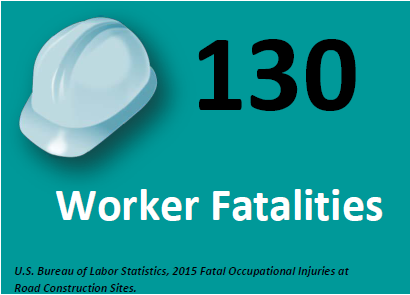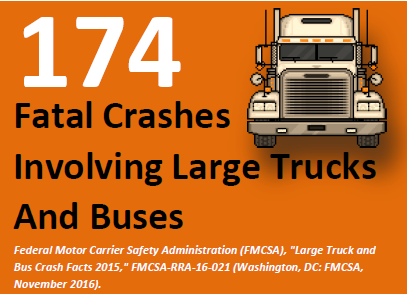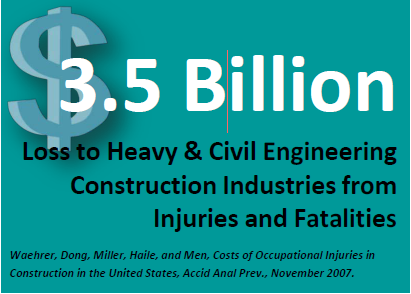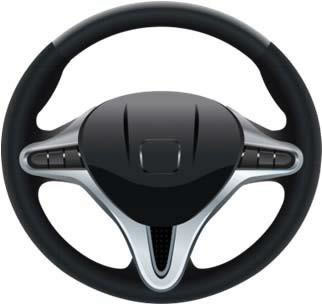National Work Zone Awareness Week April 3-7, 2017
Printable version [PDF 778KB]
You may need the Adobe® Reader® to view the PDFs on this page.
Contact Information: Work Zone Feedback at WorkZoneFeedback@dot.gov
Drivers, Work Zone Safety Is in Your Hands
You have the ability, as a driver, to improve work zone safety. Nearly four in five victims in work zone crashes are drivers and passengers. The statistics below represent just one year of work zone crash incidents. Your driving habits can directly help—or harm—the well-being of other motorists, cyclists, workers, and pedestrians. When you choose to put aside distractions, you gain the ability to save a life, perhaps yours. Choose to put safety in your own hands and help drive these numbers down to zero.
 |
 |
 |
 |
Drive Towards Zero Crashes
Did you know a major sports arena could be filled with the number of people injured or killed in U.S. roadway work zone crashes 1each year? According to Federal Highway Administration work zone accident statistics, annually there are approximately: 1
- • 84,721 crashes
- • 22,276 injures
- • 595 traveler and worker deaths
Your driving actions and habits can save lives, including yours!
- Know the work zone signs. Think of "signs" in two ways. They are the metal plaques that inform and warn you, but there are other devices and other indicators that tell you about the work underway, mark the path you should follow, and help you navigate the work zone. Look for direction from cones, barrels, pavement markings, and other devices designed to get you safely through the work zone.
- Pay attention to other drivers. It's never a good idea to ignore other drivers no matter where you're driving, but in work zones you need to be especially mindful of them. Roadway work zones are less forgiving than normal stretches of highways and streets. They often have narrower lanes and no shoulders to escape to in case you want to take evasive action.
- Stay focused. Avoid distractions. Losing focus on your driving is bad in any situation, but it can prove deadly in roadway work zones. Observing what the signs tell you, controlling your speed, steering carefully, and keeping an eye on other drivers—all demand your full attention. Stop eating. Put down your mobile device. Keep your focus on your driving.
- Expect the unexpected. When you drive in work zones, it's always best to prepare yourself for something unexpected, such as menacing actions by other motorists, construction vehicles that slow down to leave the roadway and pull into the work area, dump trucks that emerge from the work area and enter your lane up ahead, workers operating scant inches from your path, uneven pavement lanes, and loose gravel on the road surface to name just a few. When you anticipate problems, you are better able to react to them appropriately.
 Keep your cool. Be patient. Maintain calm. Don't get rattled by work zone situations. Always make sure your speed is appropriate to the situation— that could be slower than the posted limit. Finally, don't lose your patience or your temper. If you keep your cool, you and everyone else will make it through the work zone and arrive safely at your destinations.
Keep your cool. Be patient. Maintain calm. Don't get rattled by work zone situations. Always make sure your speed is appropriate to the situation— that could be slower than the posted limit. Finally, don't lose your patience or your temper. If you keep your cool, you and everyone else will make it through the work zone and arrive safely at your destinations.
Visit the FHWA Work Zone Management web site at https://www.fhwa.dot.gov/workzones and the National Work Zone Safety Information Clearinghouse website at https://www.workzonesafety.org/ for access to useful resources, guidance, and training.
1 https://ops.fhwa.dot.gov/wz/resources/facts_stats/safety.htm; US Department of Labor, Bureau of Statistics, "2003‐2015 Fatal Occupational Injuries at Road Construction Sites," https://www.workzonesafety.org/files/documents/crash_data/2003-2015_worker_fatalities.pdf (accessed February 17, 2017); 2013-2015 NHTSA FARS and GES data. Return to note 1.
This material is based upon work supported by the Federal Highway Administration under Grant Agreement No. DTFH61-I3-H-00025. Any opinions, findings and conclusions or recommendations expressed in this publication are those of the author(s) and do not necessarily reflect the view of the Federal Highway Administration. This publication does not constitute a national standard, specification or regulation.
 |
March 2017 |
 |
